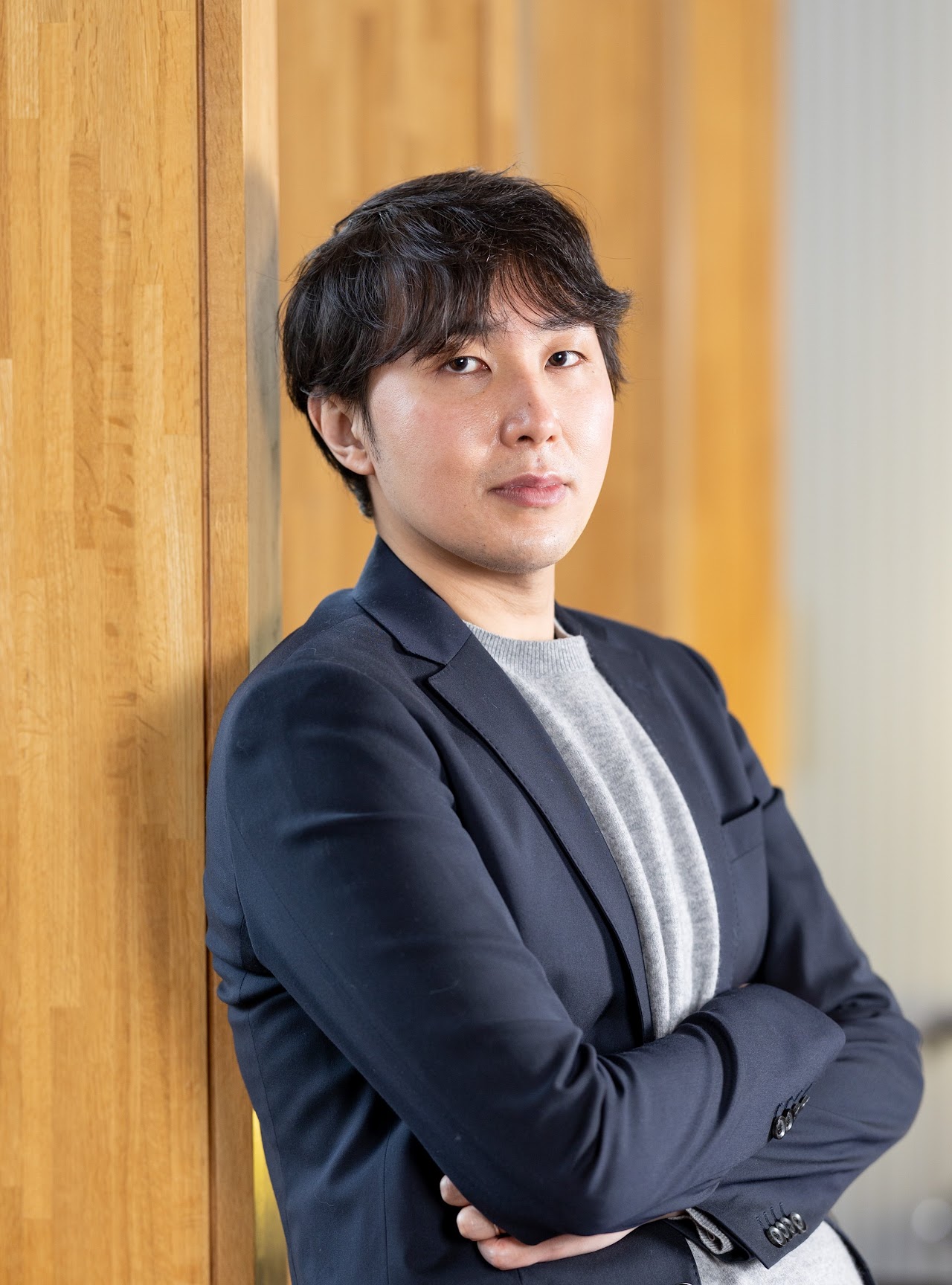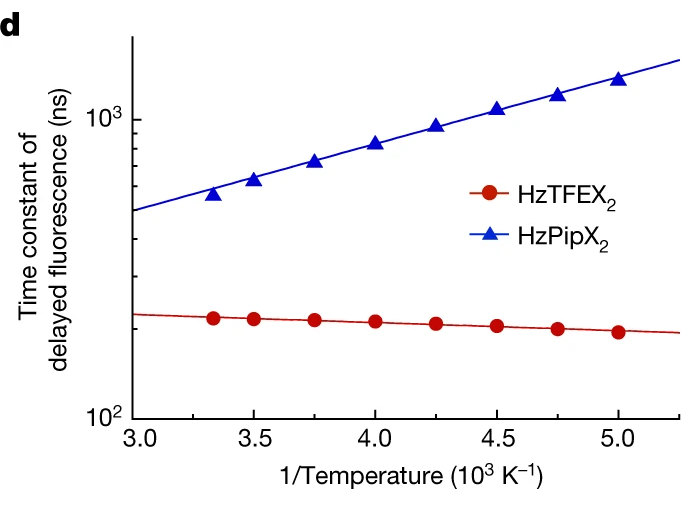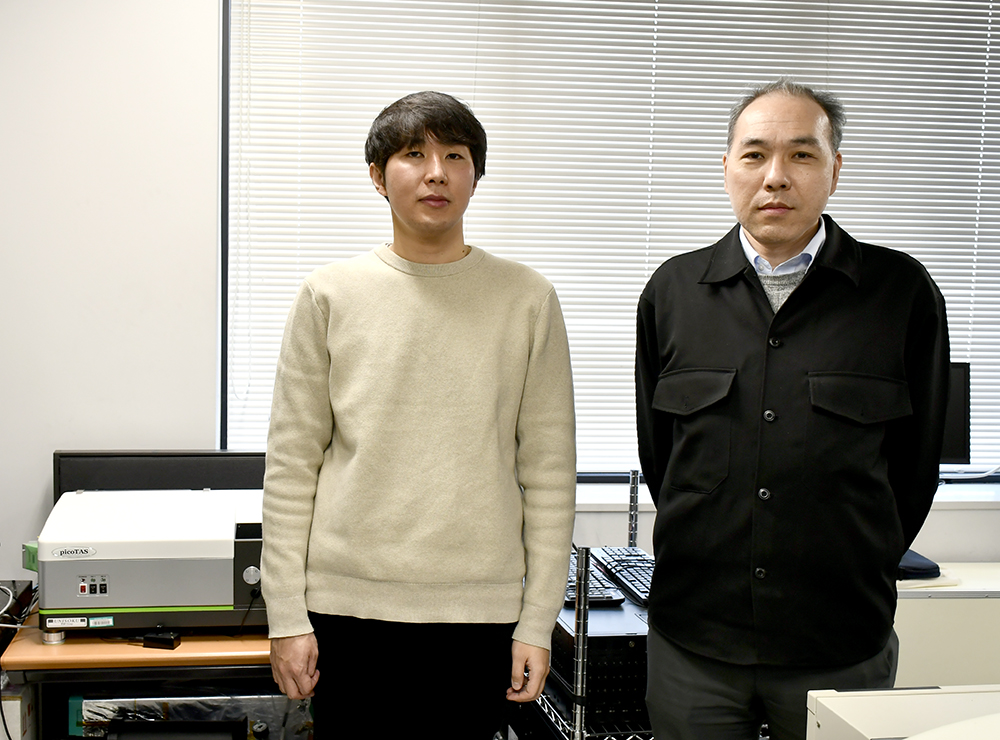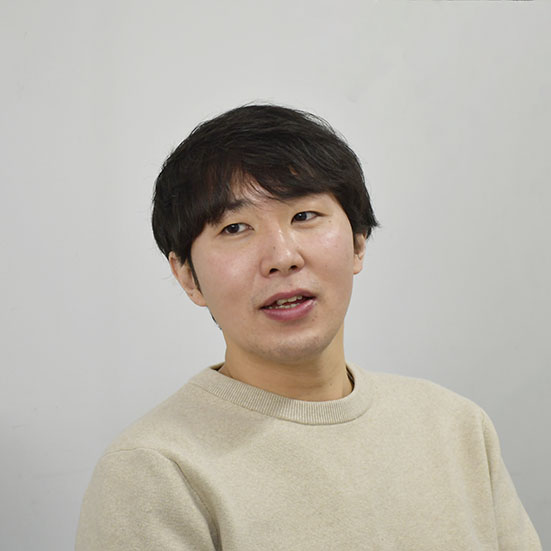——Congratulations on your publication in Nature!
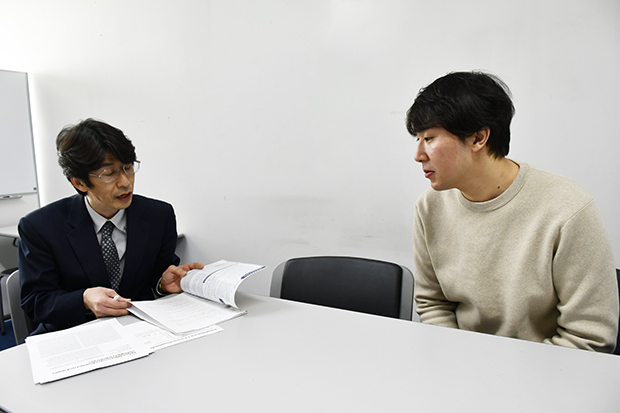
Dr. Naoya Aizawa(Right),
Dr. Tatsuo Nakagawa[UNISOKU](Left)
UNISOKU :First of all, congratulations on the publication of your research in Nature. This is truly an outstanding achievement, and we are delighted that our picoTAS was used in your research. Moreover, this is first time which picoTAS contributes to a Nature’s publication. Regarding the title of your paper, I was already amazed by the reversal of energy between Singlet and Triplet states, disobeying the Hund's rule, however, I'm curious, why is it titled "Delayed fluorescence from inverted..."? Could you provide some insight into this?
Dr. Aizawa :Thank you very much. The reason we added "Delayed Fluorescence" to the title is that simply having the reversal of energy between Singlet and Triplet states isn't unique, as there are other examples. To claim it as a world-first, we needed to emphasize the aspect of delayed fluorescence. By indicating that we have reversed the energy difference (ΔEST) between the excited Singlet state (S1) and Triplet state (T1) and achieved delayed fluorescence, experts will recognize that this is something truly groundbreaking and unprecedented.
UNISOKU :Was there a special reason for submitting to Nature instead of Science? Looking at the paper, I noticed that the submission date was April 29, 2021, and it was accepted on July 21, 2022, which is a period of 1 year and 3 months. What took so long for the review process?
Dr. Aizawa :Personally, I feel more delighted about the publication in Nature. In the field of chemistry, Nature has a higher impact compared to Science, in my opinion. As for the lengthy review process, it simply came down to the fact that some reviewers took a long time to respond (laughs). Additionally, the review itself was quite rigorous. While some reviewers were quick to provide feedback, others took their time...
——How has the response been?
UNISOKU :How has the response been after the publication in Nature? Also, what are your thoughts on the future implications and applications of your research?
Dr. Aizawa :We have received positive feedback from everyone, expressing their fascination with the fact that we have broken the Hund's rule which is taught in textbooks. Our research was even nominated for the 2022 C&EN's molecules of the year. We have also seen an increase in opportunities for collaborative research and received inquiries from companies interested in practical applications.
The study of organic light-emitting diodes (OLEDs) is truly an applied research field that requires knowledge and expertise from various disciplines such as organic chemistry, photochemistry, quantum chemistry, and semiconductor physics. Interestingly, even in applied research like this, we often gain insights into fundamental science from it. This study, which disobeys the Hund's rule by achieving a negative ΔEST, serves as a great example of that.
Moving forward, we aim to discover new materials that have potential for practical applications, such as those used in smartphone displays. For instance, in the field of delayed fluorescence, we have proposed a new type called "H-type" as the heptazine molecule was first synthesized for this purpose. We want to further investigate the properties of this new type of delayed fluorescence molecule with a negative ΔEST to advance the fundamental photochemical science.
UNISOKU : How has the response been in Yamagata University and other collaborators? I noticed that Yamagata University issued a press release as well. I found many scientists involved in your research. Could you please tell us about the division of responsibilities if you don’t mind to?
Dr. Aizawa : Yes, Dr. Pu, RIKEN, who is the second author, is also affiliated with Yamagata University, so they have issued a press release, too. I primarily handled experiments and calculations related to emission spectra and other spectroscopic aspects, while organic synthesis was primarily led by Dr. Miyajima, who works in RIKEN.
——About inspiration for you research
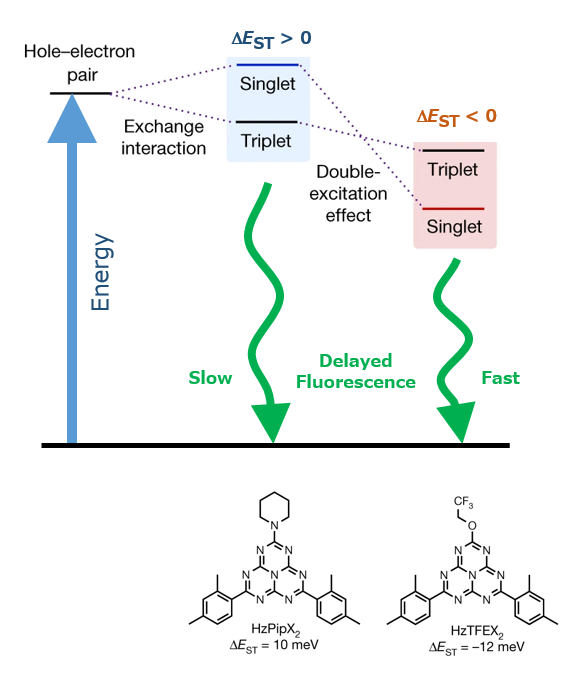
UNISOKU :There is a concept called serendipity, where unexpected phenomena or results are discovered first, and theories or objectives are developed afterward. How about your research in that regard?
Dr. Aizawa :This research had a theoretical foundation first, then we aimed to design materials that exhibit a negative ΔEST based on that. The possibility of a reversed ΔEST in heptazine derivatives had been discussed in theoretical studies since the 1980s, but there have been no experimental examples. As an experimentalist, I had the idea around 2020 to synthesize and validate these theories. I collaborated with Prof. Miyajima and others who excel in synthesis, with the intention that even if the ΔEST didn't turn out to be negative, we would still create molecules having a small ΔEST. By the end of that year, we had started to collect core data, but when we discovered that the synthesized molecules indeed had a negative ΔEST, I was quite surprised.
——How did you choose the two molecules?
UNISOKU :The term "Computational Screening" is mentioned in the paper. How did you go about screening over 35,000 compounds and selecting the approximately 1,000 molecules? And regarding the two molecules, HzTFEX2 and HzPipX2, how did you choose them finally for this study? And I’m curious about the quantum chemical calculations of ΔEST and how much time was required for each calculation?
Dr. Aizawa :As for the selected molecules, our criteria included ease of synthesis and, yes, a touch of intuition (laughs). We first synthesized HzPipX2, which had a borderline positive ΔEST and thought it might work. Then, when we synthesized HzTFEX2 as the second molecule, which exhibited a negative ΔEST. It was quite lucky. From a more practical perspective, there may be high-performance molecules to explore. Considering not only the emission properties but also the carrier injection and overall quantum yield, I believe there are still many molecules that can exhibit negative ΔEST. Furthermore, since it is a novel area in photochemistry, there are aspects that are yet to be understood, such as the effect of increasing the magnitude of negative ΔEST. I would like to investigate these fundamental scientific aspects as well.
Regarding computational time, it took about two months to finish a single calculation using EOM-CCSD method* for each molecule. While it may be possible to optimize the calculations for faster speed, it is still faster to synthesize molecules and verify its properties experimentally (laughs). Computational time remains a challenge.
*EOM-CCSD: A theoretical calculation method called Equation-of-Motion Coupled Cluster with Single and Double excitations.


